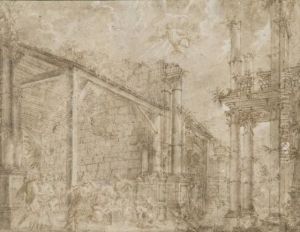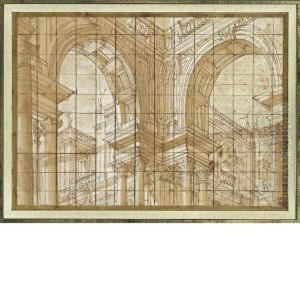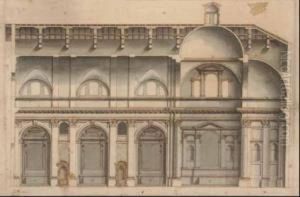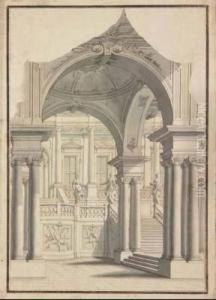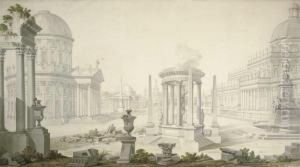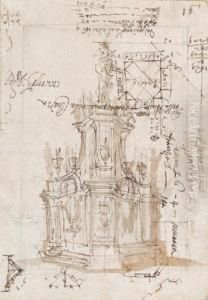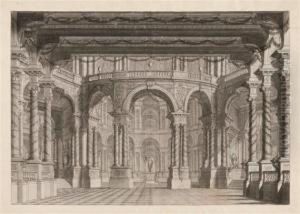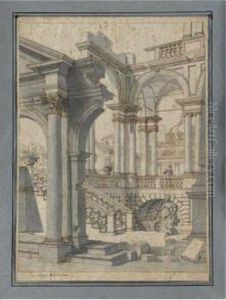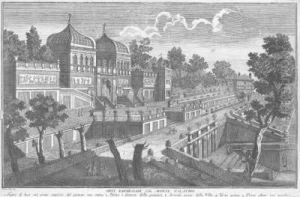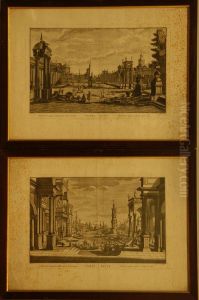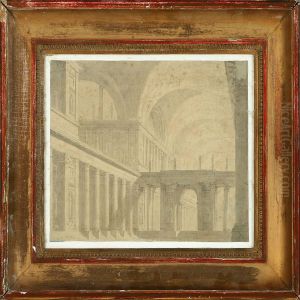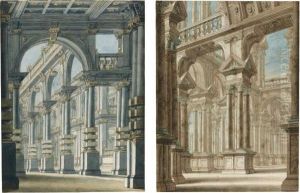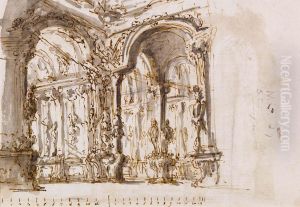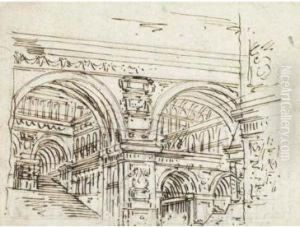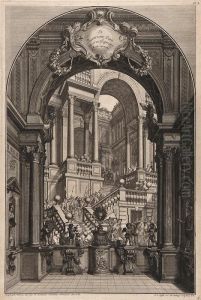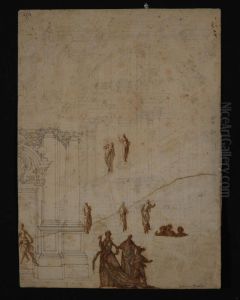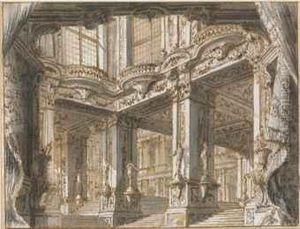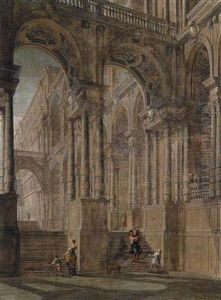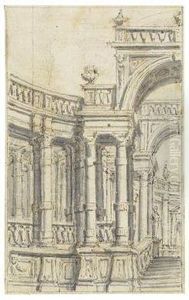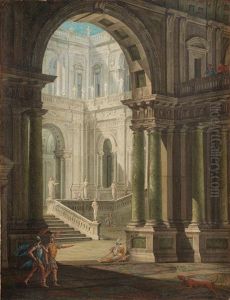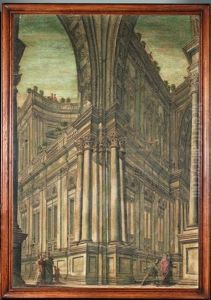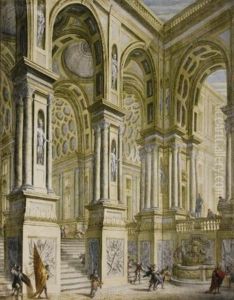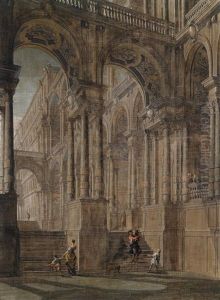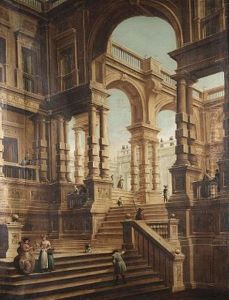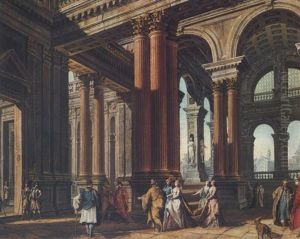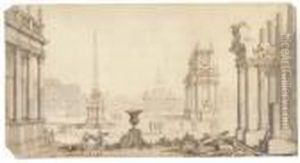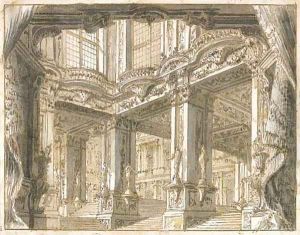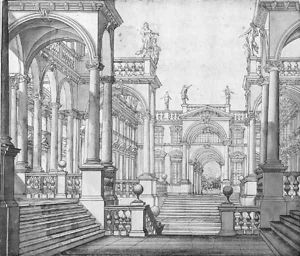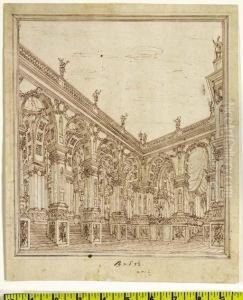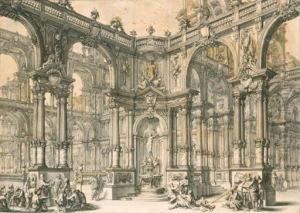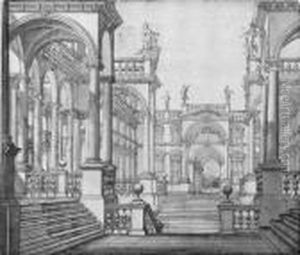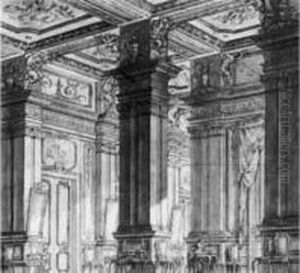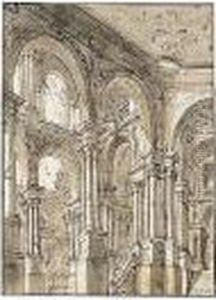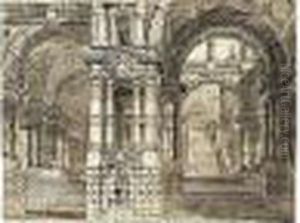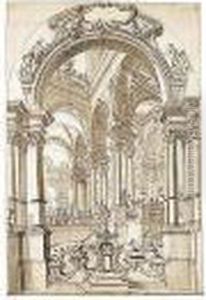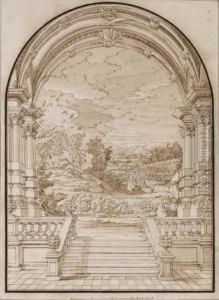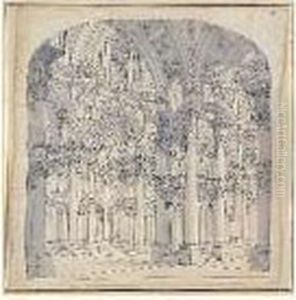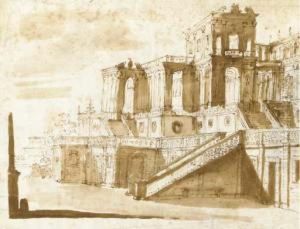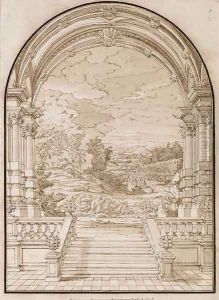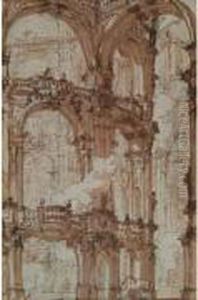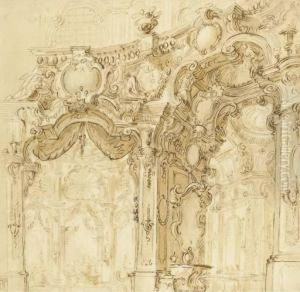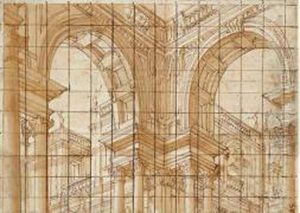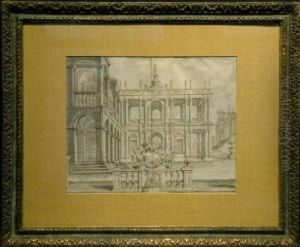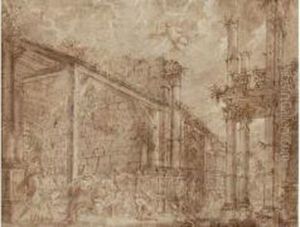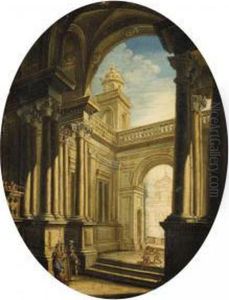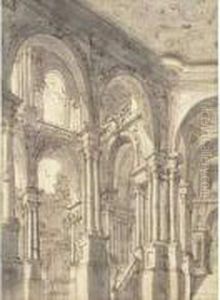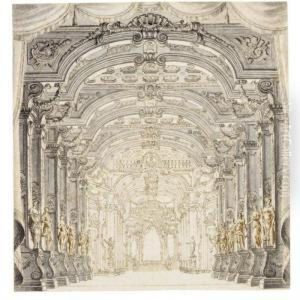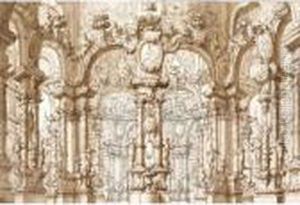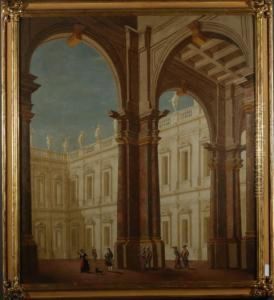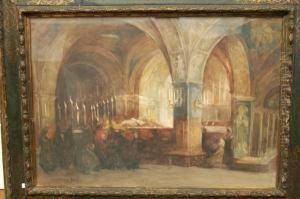Giuseppe Galli Bibiena Paintings
Giuseppe Galli Bibiena, born in Parma, Italy in 1696, was a member of the illustrious Galli da Bibiena family, a dynasty of Italian artists and designers who were known for their work in theatre architecture, stage design, and fresco painting. He was the son of Ferdinando Galli Bibiena, who was also a prominent artist and the patriarch of the family. Giuseppe was trained by his father and quickly became a reputable artist in his own right, specializing in the baroque style that was prevalent during his time.
Giuseppe's career flourished throughout the courts of Europe, where he worked as an architect, painter, and stage designer. He continued the family tradition of creating grand theatrical designs, which were characterized by their elaborate architectural perspectives and use of trompe-l'oeil to create the illusion of three-dimensional space on flat surfaces.
One of his most notable contributions to the arts was his involvement in the development of the 'Bibiena style' in theatrical design, which departed from the traditional painted backdrops and introduced more dynamic, three-dimensional stage sets. This innovation greatly influenced the evolution of scenic design and is considered a hallmark of 18th-century theatre.
Throughout his life, Giuseppe worked for various royal families and was involved in numerous prestigious projects, including the decoration of theatres and palaces. He carried out commissions in cities such as Vienna, Dresden, and Berlin, leaving a lasting legacy of his artistic style. His work was highly regarded, and he was often called upon to teach others, including members of his own family, thus ensuring the continuation of the Galli Bibiena artistic legacy.
Giuseppe Galli Bibiena died in 1757, having made a significant impact on the art of stage design and baroque interior decoration. His work and that of his family continued to influence European art and theatre long after his death, with the Bibiena name remaining synonymous with the opulence and grandeur of baroque art and architecture.
